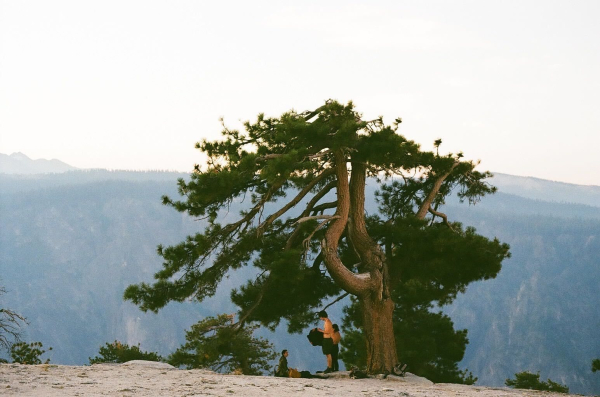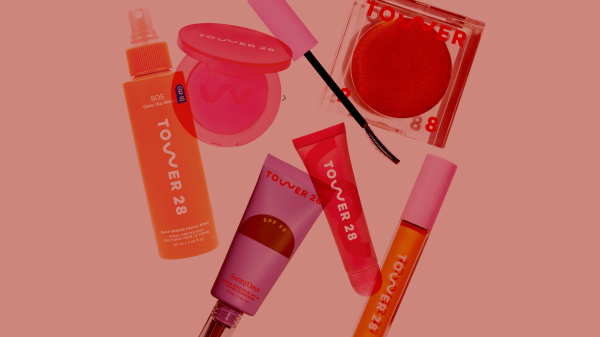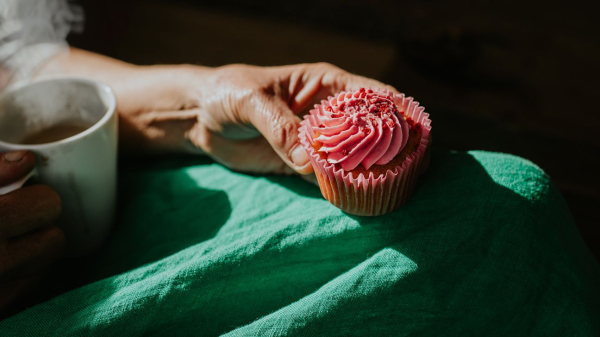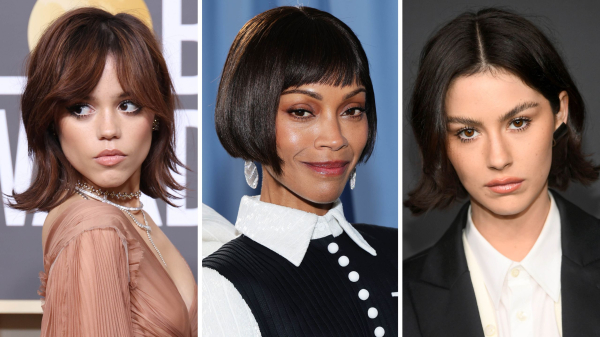PauseCollage: Allure; Source images: Lex Goldstein, Getty ImagesSave this storySave this story
Spitting cherry seeds outside the window of a moving car is a very precise sport. You have to command a balance of force and aim to hinder boomerang kisses blown by the mountain wind. It’s the kind of slow activity ideal for days of oppressive heat, when sunscreen-lathered thighs stick to car seats and each dip in snowmelt streams is some kind of homecoming.
For quite a few of those sluggish days, my destination was an unmarked swimming hole off the side of a backcountry road in Northern California. Referred to colloquially as Jackass Creek, the location is merely coordinates passed along on a note that lost its bend-and-snap long ago. The spot may be but a blip on Google Maps, but it’s ingrained in me as a landmark of discovery in my life.
In the two summers I spent as a summer camp photographer neighboring Yosemite National Park, I captured unimaginably beautiful scenes. The smiling faces of children exploring the wonders of nature and adolescence filled most of my SD cards. However, off the clock, I was just as wide-eyed. Freshly launched into early adulthood, I joined a remote community of seasonal employees who generously spun, flipped, and then shredded just about every social norm and expectation I had ever known. Physically separated from the city scapes, billboards, and neighborhood politics we all knew too well, we gained an opportunity to reformat outlines of behavior others had drawn up for us. Call it hippie-ish or call it crunchy granola… and honestly, you would have a fair argument.
I called this sprawling land of Ponderosa Pines home for about five months of my life, split between two years of college. It was during this back and forth between the “real world”—if you want to call a midwestern campus such—and the woods that I picked up on just how different life was within my communities at home and this community, one that danced in the forest under a real bed of stars.
At home, I would spend days obsessing over outfits, then frying my hair with a straightening iron to conceal a mess of curls I did not know how to begin caring for. I had never been one for a face of makeup, but my surroundings often made that choice feel wrong. In some ways, these experiences are a natural byproduct of teenhood: wanting to fit in, and learning that appearance matters when you ditch the sandbox for football games and playdates for job interviews. When you’re 18, you feel powerless in a high school ecosystem. So I smeared jet black mascara on my lashes and clamped the flat iron down day in and day out. I allowed the approval of others to measure my own beauty.
Thus, it was a pretty immediate “yes” to summer off the grid—a chance to unplug in every sense of the word. I also craved an escape from homogenous suburbs and the barrage of expectations they spewed. I naively thought that a remote and rustic lifestyle would eliminate external pressures on my appearance. Salvation surely awaited me at the gates of this sweaty utopia!
But aesthetic salvation wasn’t exactly what I got.
Out in the woods, under the mid-afternoon sun, I saw myself and the women around me glow in a way I had never seen before. Not because it was my first time in nature, but because of the positivity enveloping the physical setting. The notable absence of judgmental glances—real or loosely perceived—and a screen-free existence influenced what I thought was beautiful. I saw the thin layer of sweat and sunscreen coating our bodies as a genuine shimmer, nothing unpleasant or unwelcome. Untamed hair, fresh from a river dunk, had never looked so charming. Even though we used sunscreen—which I feel the need to reiterate—sunkissed cheeks looked elegant, and blooming stretches of freckles mirrored the constellations we marveled at in the evenings.
At the summit of El Capitan, in Yosemite National Park.
Lex GoldsteinMost Popular
 Makeup6 Colorful Mascaras That’ll Convince You to Ditch Basic Black
Makeup6 Colorful Mascaras That’ll Convince You to Ditch Basic Black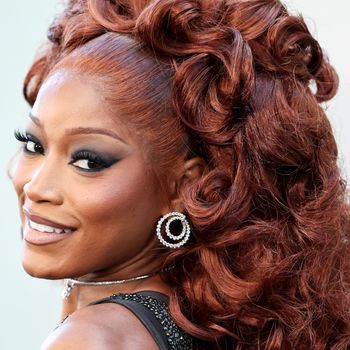 CutKeke Palmer's New Pixie Cut Needs Your Attention Immediately
CutKeke Palmer's New Pixie Cut Needs Your Attention Immediately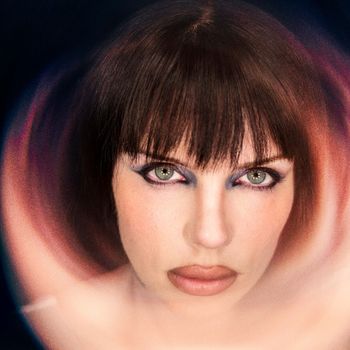 Cover ShootsJulia Fox Is Unsubscribing From the Male Gaze
Cover ShootsJulia Fox Is Unsubscribing From the Male Gaze
Girlhood felt reborn on the worn wooden benches lining the mirrors and shower caddy shelves of the bathhouse. We gathered there daily to discuss what was for lunch, trade clothes, and share glitter gels and curl creams for nighttime gatherings, once the river hair magic subsided. The products and mirrors we associated with the “real world” still had a place in our day-to-day lives, but we did not center our days around personal vanity.
The choices that went against a social norm were often the most celebrated. Whimsical mullet hairstyles, unshaven body hair, and hiking boots paired with silk dresses were frequent sights. Facilitating this culture of experimentation and contrarian styles was intentional language from counselors to their campers, teaching girls at a young age that everything on their faces and bodies was not just normal, but beautiful and interesting. The walls of the bathhouse are, fittingly, decorated with painted wooden plaques commemorating decades of women who learned to love themselves and their bodies in this same pocket of the woods.
So, for a while, I thought I had dismantled the tiring expectations surrounding appearances—not just escaped them. But I have more recently come to the conclusion that the beauty I observed still felt like an ideal to be emulated. Something to work towards. River-tousled hair, freckles, and an air of self-confidence were all measures of a low-maintenance kind of beauty—decievingly detached from social expectations.
There were no billboards in the woods advertising as much, as of course. Rather, it was human nature to see something in or on another person and want to mimic it myself—whether that be for personal or interpersonal benefit.
I can’t say that I became the kind of person who can ditch the mirror for good. I didn’t entirely remove myself from the status quo. The cares I gave up just transformed into a new set of self-improvements specific to the setting. The current cultural moment—the clean girl aesthetic and no-makeup-makeup looks—somehow still permeated our community miles and miles from cosmetic offerings. Anything can be a trend or become a norm, even what feels like square one.
So long as you surround yourself with other people, it is inevitable that social standards and expectations will form. From the city to the woods, people are people. You have to decide for yourself whether the new norms are helpful or harmful to you. I walked away with a community of people I will get to love and care for long after those two summers, and to me, that’s more important than escaping the status quo altogether. Whatever expectations of beauty I aim to defy now, I simply replace with ones I associate with a different community.
I’m now based in New York City, and I can admit that I was intimidated to put my new outlook on beauty to the ultimate test by living and working in a major metropolitan area. I’m taking baby steps: deciding that I can and should blow out my hair if I want to and dust my cheeks with blush if I’m in the mood. Or going bare-faced because I want to let my skin care have its own moment.
If you don’t have balance in how you approach beauty for yourself, you may end up seeing the return of the boomerang when you spit out expectations, like cherry pits. Let them bloom on the side of some road in Northern California, and let yourself grow and change, too.
